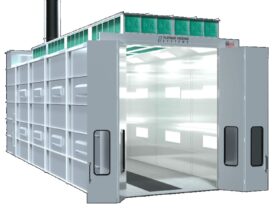You wouldn’t run into a battlefield without checking your armor—so why are so many contractors still ignoring their digital defense? In a time when threats evolve faster than regulations can keep up, relying on outdated cybersecurity habits is no longer an option. The CMMC standard might just be the shake-up that finally gets contractors to pay attention.
The CMMC Standard Shakes Up Complacent Compliance Practices
For years, many contractors followed a checkbox approach to cybersecurity—doing just enough to get by without considering whether their systems could actually resist real threats. The Cybersecurity Maturity Model Certification (CMMC) changes that entirely. It sets a new baseline where effort, not excuses, is the new currency. No more self-attestation. Now, defense contractors need verified proof they’re safeguarding sensitive government data.
This shift is forcing organizations to stop seeing compliance as a once-a-year paperwork drill. Under the CMMC framework, contractors must show operational maturity. That means actively monitoring, managing, and evolving their cybersecurity posture year-round. It isn’t just about whether a firewall is installed—it’s about how that firewall is configured, tested, and managed day to day. With multiple levels of certification, the framework challenges even mid-sized contractors to tighten up loose ends they didn’t even realize existed.
Cybersecurity Accountability Shifts Dramatically with CMMC
Before CMMC, cybersecurity responsibility often floated somewhere between IT teams and executive leadership, with no one really owning the outcomes. But now, there’s nowhere to hide. With third-party assessments required, accountability sits squarely on leadership’s desk. CEOs can’t claim ignorance, and CISOs can’t defer risk to outdated policies.
This isn’t just a technical adjustment; it’s a culture shift. Decision-makers now need to be intimately familiar with their organization’s cyber risks and how their teams are mitigating them. That means understanding what CMMC is, how it affects their business, and where their gaps lie. Leaders can’t pass the buck to vendors or hope for leniency. If you want to win or keep Department of Defense contracts, your entire organization—from boardroom to basement—has to prove it understands and manages cyber threats.
Contractors Face Reality Check in Defense Contract Cybersecurity
The defense sector has long depended on a vast network of subcontractors. But let’s face it—many of them never considered themselves as high-value cyber targets. That illusion is shattered now. CMMC has drawn a thick line in the sand, and every contractor must decide which side they stand on: secured or sidelined.
This is particularly sobering for small and mid-sized firms that assumed security was a problem for the “big players.” In truth, attackers often see them as easier entry points into larger supply chains. CMMC certification forces contractors to acknowledge that sensitive information flows through every tier of the supply chain. Whether you’re building hardware or providing logistics, your cyber hygiene is now a matter of national security.
How CMMC Exposes Hidden Vulnerabilities in Contractors’ Cyber Practices
What makes CMMC effective isn’t just the checklist—it’s the way it uncovers the stuff contractors didn’t even know was vulnerable. For example, many companies had weak access controls, fragmented documentation, or gaps in incident response plans. They passed previous audits because those checks didn’t dig deep enough. CMMC does.
Even contractors with relatively mature systems are finding that CMMC’s layered levels reveal overlooked risks. Data stored on cloud platforms, forgotten user accounts, improperly segmented networks—these all become liabilities under scrutiny. The model forces organizations to revisit how they collect, transmit, and store Controlled Unclassified Information (CUI), highlighting just how much was being left to chance.
Rethinking Contractor Cyber Hygiene Under CMMC Requirements
Basic cyber hygiene sounds simple, but under CMMC, it takes on a whole new meaning. Regular password updates and antivirus software are no longer enough. Contractors must show they understand how to build a sustainable cybersecurity environment. That means proper training, continuous monitoring, incident response planning, and clear documentation.
CMMC’s tiered approach makes contractors look inward and ask hard questions: Are our users properly trained? Are we tracking failed logins and unusual behavior? Is encryption used where it should be? The process challenges outdated habits, like relying on static policies or assuming compliance equals security. Contractors now have to develop a living, breathing security posture that adapts in real time.
CMMC Forces Closer Attention to Previously Overlooked Risks
Many risks fly under the radar simply because they don’t trigger alarms—until it’s too late. With CMMC, organizations must account for the quiet, creeping risks that typically go ignored. Legacy software, unsecured IoT devices, and untracked physical access to systems are now fair game during audits.
This deeper inspection makes CMMC different from past standards. It isn’t just about what systems are in place—it’s about how they’re actually used. A contractor may have solid infrastructure on paper but fail to control administrative privileges or update firmware. These gaps don’t show up in spreadsheets, but they will under the microscope of a certified assessor.
CMMC Pushes Contractors Beyond Minimal Compliance Mindsets
A compliance checkbox is comfortable. It’s predictable. But CMMC isn’t built for comfort—it’s built for resilience. Contractors can’t just aim for the lowest bar anymore. They’re now incentivized to embed security into their culture, not just their documents.
This shift has caused companies to go beyond the bare minimum and evaluate long-term investments in cybersecurity. They’re hiring dedicated security personnel, engaging with managed cybersecurity providers, and rethinking how compliance integrates into daily workflows. The focus is no longer just “Are we compliant today?” but “Are we secure enough to stay in business tomorrow?”






